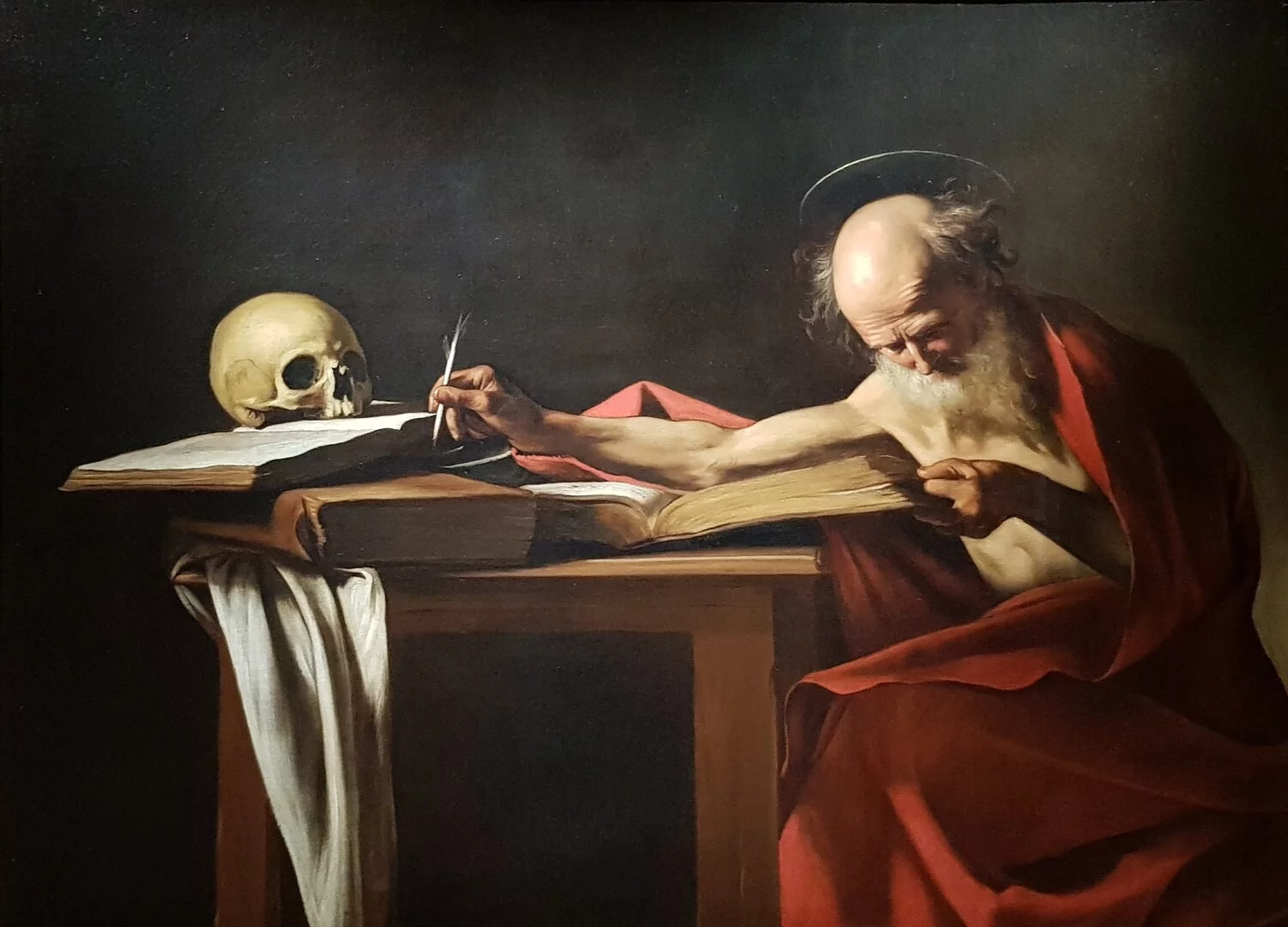Caravaggio’s Saint Jerome Writing – The Light of Faith and Intellect
Discover Caravaggio’s Saint Jerome Writing at the Galleria Borghese, a contemplative Baroque masterpiece illuminated by divine light.

Caravaggio’s Saint Jerome Writing: The Light of Wisdom
In Caravaggio’s Saint Jerome Writing (1605–1606), the drama of light and shadow serves not to shock but to sanctify. The painting, housed in the Galleria Borghese, reveals a quieter, contemplative side of the artist — one steeped in devotion and introspection.
A Saint of Study and Solitude
Saint Jerome, translator of the Latin Vulgate Bible, sits absorbed in his task, quill poised, skull before him as a reminder of mortality. Draped in red, his body glows against the darkness, symbolizing the flame of divine inspiration. His hand reaches toward the sacred text, bridging the earthly and the eternal.
Caravaggio’s Vision of Faith
Unlike idealized Renaissance depictions, Caravaggio presents Jerome as a real man of flesh and age — wrinkled, tired, yet illuminated from within. The light pouring across the table is not just physical but spiritual: it represents enlightenment, revelation, the grace of understanding.
Artistic Mastery
The composition’s austerity underscores the painting’s emotional force. The skull, the book, the quill — all are vanitas symbols, reminders of life’s transience and the search for truth that transcends it.
Reflection
Caravaggio’s Saint Jerome Writing invites quiet contemplation. It speaks of the nobility of knowledge, of faith pursued through thought and labor. In a gallery filled with passion and movement, this painting offers stillness — a candle flickering in the night of the soul.
About the Author

Dr. Alessandra Rossi, Art Historian
An art and history enthusiast, I created this site to help visitors experience the Galleria Borghese fully. Drawing from personal visits, I share insights, tips, and practical advice for art lovers.
Tags
Comments (0)
Loading comments...